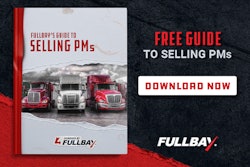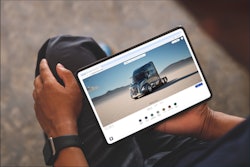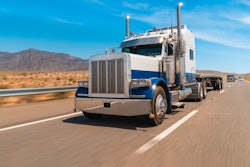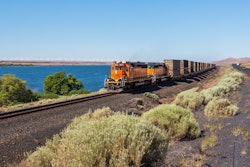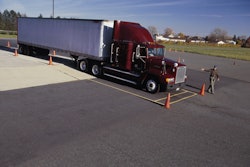Adam Lang said he knew a driver who once forgot about a bunch of points he had built up in the company’s safety incentive program over the span of a year and a half. That driver had enough points to buy Christmas gifts for his entire family.
Lang, customer advisory services director at Netradyne, said employee recognition and rewards programs can be a great addition to a carrier’s safety incentive program, but it should be a facet of the program, not the entirety of the program.
The goal of these programs is keeping safety top of mind day in and day out, said Rob Ludwig, executive sales manager at All Star Incentive Marketing, which tailors employee rewards and recognition programs.
There are many opportunities for carriers to award drivers, and there are several ways to reward them, from money and gift cards to physical gifts, experiences, and plaques and certificates. But the question remains: what do drivers appreciate and remember the most.
During the recent Safety Week, Cargo Transporters gave drivers a T-shirt, a wristband and a pen. It wasn’t a safety reward but a safety reminder, said Director of Recruiting Shelley Dellinger.
When it comes to rewards, “I believe most drivers will say (they prefer) money over stuff,” Dellinger said.
Money vs. merchandise
Walmart Transportation uses All Star to incentivize its more than 15,000 drivers. All Star is integrated with Walmart’s telematics provider, Lytx, and those scores are converted into points that drivers can use to purchase from All Star’s 60,0000-square-foot warehouse stocked with brand-name merchandise.
Drivers earn points for doing things like making monthly safety pledges and taking safety surveys as well as based on their Lytx scoring. Ludwig said All Star is in talks with Netradyne, Samsara and Motive to integrate with them as well. All Star also offers a wellness option where drivers can earn rewards for things like step challenges because wellness is inextricably related to safety, he said.
“The reason we don't want to use cash or cash-like rewards like gift cards is they're not memorable. If you give somebody a cash reward, it's easily confused with compensation,” Ludwig said. “You give somebody a gift card to a Home Depot or a Lowe's, and you ask them what they did with it two months from the time they got it, they probably stuck it in a drawer and forgot about it, or they bought light bulbs and/or mulch or something like that.”
Ludwig agreed with Dellinger that drivers would most likely prefer cash, but he said monetary rewards don’t have trophy value like merchandise.
“They're going to forget what they spent the $100 on, but every time they use their Nutribullet blender to make a smoothie at home, they're going to subliminally be reminded where they got that. It's very powerful,” he added. “Somebody who has redeemed (points) for a Black and Decker cordless tool, or a drone, or a Yeti cooler, every time they use that product, they're going to be reminded … where they got that reward. That’s why we use tangible, memorable rewards in these programs.”
Lang, who has previously worked with employee incentive programs, said there are pros and cons to points-based systems.
He said one cool thing about these types of programs is they often offer experiences in addition to merchandise. But if a company isn’t creative and doesn’t keep the incentive program front and center, drivers often forget about it.
That’s why he recommends using such a program as a supplement, not a standalone. Same thing goes for money.
Lang agreed with Ludwig that monetary incentives are short-lived.
And realizing that, Cargo Transporters alternates between money, merchandise, gift cards and swag, Dellinger said.
“If we give a gift/logo item for NTDAW (National Truck Driver Appreciation Week), then we will give a gift card for Christmas. The gift card is normally from Lowes Home Improvement or Walmart. This past NTDAW we gave our Drivers a 50.00 Love's card,” she said. “One year was a nice Polo, which was a nightmare to collect sizes and colors, order and then hand out. We give T-shirts for positive recognition. Orientation gift, right now, is a trunk organizer with a nice shower bag and a few other items: pen, Chapstick, earbuds.”
Dellinger said the carrier sometimes feels that its gifts go directly to a spouse or family.
“We are always giving things to our drivers; they have come to expect it,” she added.
Recognition
Each type of reward has a place, Lang said. It should be based on the achievement or event.
For example, maybe a carrier gives a driver a $100/month safety bonus, but for a milestone, they should offer something more, he said. That’s where things like swag are beneficial, especially high-quality swag.
But, he said, what motivates drivers the most, in his experience, is recognition like a certificate, letter or plaque.
“To get people in the feels or emotional, I feel like recognition and experiences are the things that can really stick better than any monetary incentive, but in addition to a monetary incentive,” Lang said. “The driver is going to remember that letter, and everyone's going to remember how it made them feel. Maya Angelou said it best: ‘People don't remember what you said to them, but they certainly remember how you made them feel.’”
Netradyne offers another form of recognition with what it calls a Green Zone Score, which ranks drivers based on risk, gamifying safety. Ludwig said that score could easily be translated into points.
But the difference in Netradyne’s scoring system is it doesn’t just trigger when a driver performs an unsafe behavior; it also recognizes positive behavior and provides feedback.
“Instead of telling the driver, ‘You must be doing good because you haven't hit anything, I know you're doing good because I saw you got three driver stars this week for creating separation after cut off. That's awesome. Or you didn't have any distracted driver alerts for a week. That's amazing. Or you have a positive streak for stopping at every single stop sign,’” Lang said. “Instead of measuring what didn't happen, you're measuring what did happen and being specific and meaningful and purposeful with it.”
Employee engagement
Overall, it’s all about employee engagement, Ludwig said.
According to Gallup’s annual State of the American Workforce, companies that have highly engaged employees (ranking in the top 25%) have far fewer safety-related critical events, accidents and incidents, translating into fewer losses and lower insurance costs.
“When you look at what these companies are spending on these telematics devices, their ELDs and their cameras, it's a massive investment,” Ludwig said. “For a little additional money, by adding a reward and recognition component to help gamify (safety) and to help leverage that investment, you can use that telematics data as a basis to award points and help drive engagement.”
He said companies with greater employee engagement are also more productive and more profitable with less turnover and less absenteeism, which also lowers costs associated with recruitment and retention. In addition, HR can advertise incentive programs as a benefit like a sign-on bonues or 401K match.
“If you've got an engaged employee, they’re happier, and they're going to stay with the company … It’s just another side benefit,” Ludwig said.

